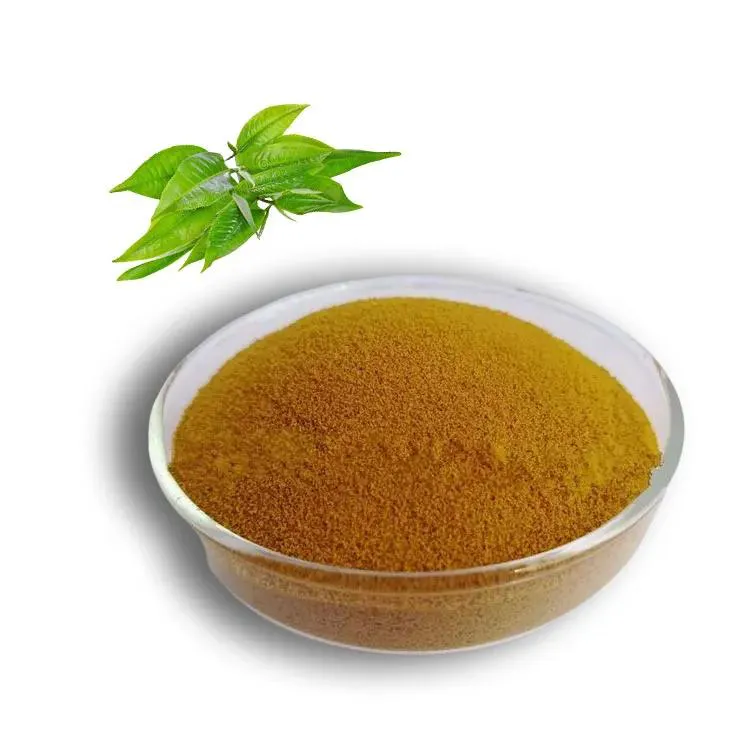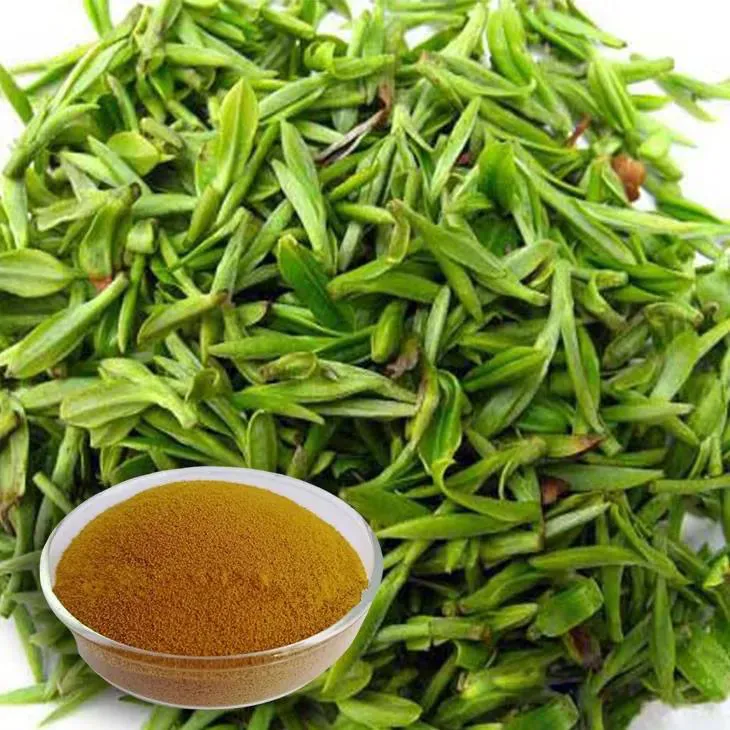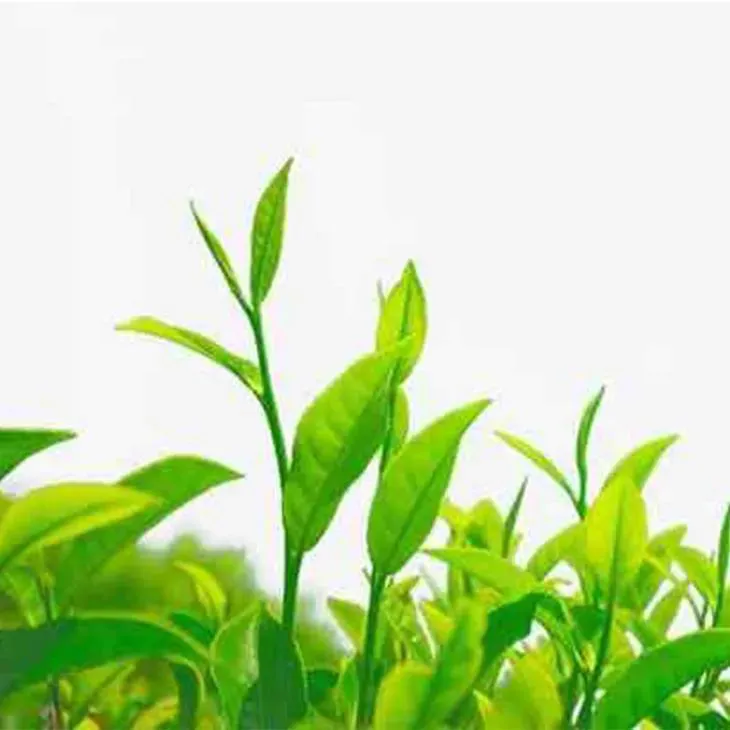- 0086-571-85302990
- sales@greenskybio.com
Best Types of Green Tea Extract: A Guide to Selecting the Best Green Tea Extract
2024-11-12

1. Introduction
Green tea has been a staple in traditional medicine and a popular beverage for centuries. Green Tea Extract has gained significant attention in recent years due to its potential health benefits. It is rich in antioxidants, particularly catechins, which are believed to play a crucial role in various aspects of health, including antioxidant support, weight management, and promoting overall well - being. However, not all Green Tea Extracts are created equal. There are different types based on extraction methods, quality levels, and intended uses. This guide will help you understand the factors to consider when selecting the best Green Tea Extract.

2. Understanding Green Tea Extract
Green tea extract is derived from the leaves of the Camellia sinensis plant. The extraction process aims to concentrate the beneficial compounds found in green tea. These compounds include polyphenols, flavonoids, and caffeine. Polyphenols, especially catechins like epigallocatechin - 3 - gallate (EGCG), are the most studied components for their antioxidant and anti - inflammatory properties.

3. Extraction Methods
3.1. Solvent Extraction
- Solvent extraction is one of the common methods. In this process, solvents such as ethanol or water are used to extract the active compounds from the green tea leaves. Ethanol - based extraction is often effective in extracting a wide range of compounds, including fat - soluble ones. However, it is important to ensure that the solvent is removed completely during the manufacturing process to avoid any potential health risks associated with residual solvents. - Water - based extraction is a more natural approach. It is suitable for those who prefer a more "pure" form of green tea extract. However, it may not be as efficient in extracting all types of compounds compared to ethanol - based extraction.
3.2. CO2 Extraction
- CO2 extraction is considered a high - quality method. Carbon dioxide is used in a supercritical state to extract the compounds from the green tea leaves. This method has several advantages. It is a clean process as CO2 is a non - toxic gas and leaves no harmful residues. It can also be more selective in extracting specific compounds, resulting in a more refined and pure green tea extract. However, the equipment required for CO2 extraction is more expensive, which can make the final product more costly.

4. Quality Markers
4.1. Catechin Content
- The catechin content is a crucial quality marker for green tea extract. As mentioned earlier, EGCG is one of the most important catechins. A high - quality green tea extract should have a significant amount of catechins. Look for products that clearly state the catechin content on the label. For example, a good - quality extract may contain at least 50% catechins by weight. - The ratio of different catechins can also affect the effectiveness of the extract. A balanced ratio of EGCG, epicatechin (EC), and other catechins may be more beneficial compared to an extract with a skewed ratio.
4.2. Purity
- Purity refers to the absence of contaminants in the green tea extract. This includes heavy metals such as lead, mercury, and cadmium, as well as pesticides and other harmful substances. Reputable manufacturers will test their products for purity and provide certificates of analysis. Look for products that are certified organic or have been tested for contaminants. - A pure green tea extract should also be free from additives and fillers. Some low - quality products may add fillers to increase the volume or weight of the product without adding any real value.
4.3. Standardization
- Standardization ensures that each batch of green tea extract contains a consistent amount of active compounds. This is important for ensuring the effectiveness and safety of the product. A standardized green tea extract will have a defined percentage of catechins or other key compounds. For example, a product may be standardized to contain 60% catechins in every batch. - Standardization also helps in dosing. It allows consumers to accurately measure the amount of green tea extract they need to take for the desired health benefits.
5. Intended Uses
5.1. Antioxidant Support
- For antioxidant support, a green tea extract with a high catechin content, especially EGCG, is ideal. Catechins are powerful antioxidants that can help neutralize free radicals in the body. Free radicals are unstable molecules that can cause damage to cells and contribute to various diseases such as cancer, heart disease, and neurodegenerative disorders. - Look for an extract that has been standardized for catechin content. A product with at least 40 - 50% catechins can provide significant antioxidant protection.
5.2. Weight Management
- In the context of weight management, green tea extract may play a role in increasing metabolism and fat oxidation. Some studies suggest that the caffeine and catechins in green tea extract can work together to boost energy expenditure. - For weight management purposes, an extract that contains both caffeine and a significant amount of catechins (such as EGCG) may be more effective. However, it is important to note that green tea extract should be used in conjunction with a healthy diet and regular exercise, not as a sole solution for weight loss.
5.3. Overall Well - being
- To promote overall well - being, a high - quality, pure green tea extract can be beneficial. It can help reduce inflammation in the body, support cardiovascular health, and potentially improve cognitive function. - A green tea extract that is standardized for both catechin content and purity can be a good choice for those looking to enhance their overall health.
6. Product Forms
- Green tea extract is available in various product forms. One of the most common forms is capsules. Capsules are convenient as they allow for easy dosing and are portable. They also protect the extract from exposure to air and moisture, which can help maintain its stability. - Another form is powder. Green tea extract powder can be added to smoothies, drinks, or used in cooking. However, it requires more careful storage as it can be more susceptible to moisture and air compared to capsules. - Liquid extracts are also available. They are easy to consume, especially for those who have difficulty swallowing capsules. However, they may require refrigeration to maintain their freshness and potency.
7. Selecting a Reputable Brand
- When choosing a green tea extract product, it is essential to select a reputable brand. Look for brands that have a good track record in the industry, with positive customer reviews. - Brands that invest in research and development are more likely to produce high - quality green tea extracts. They are also more likely to follow strict manufacturing processes to ensure the purity, standardization, and safety of their products. - Check if the brand is certified by relevant regulatory bodies. For example, in the United States, a brand may be compliant with FDA regulations. In addition, certifications such as Good Manufacturing Practice (GMP) can indicate that the brand follows high - quality manufacturing standards.
8. Conclusion
- Selecting the best green tea extract requires considering multiple factors. The extraction method, quality markers such as catechin content, purity, and standardization, as well as the intended use, all play important roles in determining the effectiveness of the extract. - By choosing a high - quality green tea extract from a reputable brand and in the appropriate product form, you can maximize the potential health benefits, whether it is for antioxidant support, weight management, or overall well - being.
FAQ:
What are the different extraction methods for green tea extract?
There are mainly solvent extraction, supercritical fluid extraction, and water extraction methods. Solvent extraction often uses organic solvents like ethanol to extract the active components from green tea. Supercritical fluid extraction, typically using carbon dioxide in a supercritical state, can be more selective and produce a purer extract. Water extraction is a more natural method, which extracts components by using hot water, similar to the traditional way of making green tea.
How can I determine the quality of green tea extract?
You can look at several factors. First, the content of key active ingredients such as catechins (especially epigallocatechin gallate - EGCG). Higher levels of these compounds usually indicate better quality. Second, the purity of the extract. A pure extract should be free from contaminants like heavy metals and pesticides. Third, the source of the green tea. High - quality green tea leaves from reputable regions are likely to produce better extracts.
Which type of green tea extract is best for antioxidant support?
Extracts that are rich in catechins, especially EGCG, are excellent for antioxidant support. Generally, extracts made from high - quality, fresh green tea leaves and using advanced extraction techniques to preserve the catechin content are the best choices. These types of extracts can effectively scavenge free radicals in the body and protect cells from oxidative damage.
What type of green tea extract is suitable for weight management?
Green tea extracts that contain significant amounts of catechins and caffeine can be beneficial for weight management. Catechins can help boost metabolism, and caffeine can increase energy expenditure. Some studies suggest that extracts with a standardized concentration of these components are more effective. However, it should be combined with a balanced diet and regular exercise for optimal results.
Are there any side effects of green tea extract?
While green tea extract has many health benefits, it can also have some side effects. High doses may cause problems such as insomnia, irritability, and an upset stomach, mainly due to the caffeine content. In some rare cases, it may also interact with certain medications. It's important to follow the recommended dosage and consult a healthcare provider if you have any underlying health conditions or are taking medications.
Related literature
- The Health Benefits of Green Tea Extract: A Comprehensive Review"
- "Green Tea Extract and Its Role in Antioxidant Defense"
- "Green Tea Extract in Weight Management: Current Research and Future Perspectives"
- ▶ Hesperidin
- ▶ citrus bioflavonoids
- ▶ plant extract
- ▶ lycopene
- ▶ Diosmin
- ▶ Grape seed extract
- ▶ Sea buckthorn Juice Powder
- ▶ Beetroot powder
- ▶ Hops Extract
- ▶ Artichoke Extract
- ▶ Reishi mushroom extract
- ▶ Astaxanthin
- ▶ Green Tea Extract
- ▶ Curcumin Extract
- ▶ Horse Chestnut Extract
- ▶ Other Problems
- ▶ Boswellia Serrata Extract
- ▶ Resveratrol Extract
- ▶ Marigold Extract
- ▶ Grape Leaf Extract
- ▶ blog3
- ▶ blog4
- ▶ blog5
-
Organic Tongkat Ali extract powder factory.
2024-11-12
-
How to make powder with ashwagandha extract.
2024-11-12
-
Rosehip extract manufacturers from China.
2024-11-12
-
The best cat's claw extract in nature.
2024-11-12
-
Chinese Dandelion Leaf Extract Suppliers.
2024-11-12
-
Thunder God Vine Extract
2024-11-12
-
Stevia Extract
2024-11-12
-
Sophora Japonica Flower Extract
2024-11-12
-
Tongkat Ali Extract
2024-11-12
-
Alfalfa Meal
2024-11-12
-
Panax Ginseng Leaf Extract
2024-11-12
-
Mangosteen extract powder
2024-11-12
-
Beetroot juice Powder
2024-11-12
-
Polygonum multiflorum extract
2024-11-12
-
Pomegranate Extract
2024-11-12





















